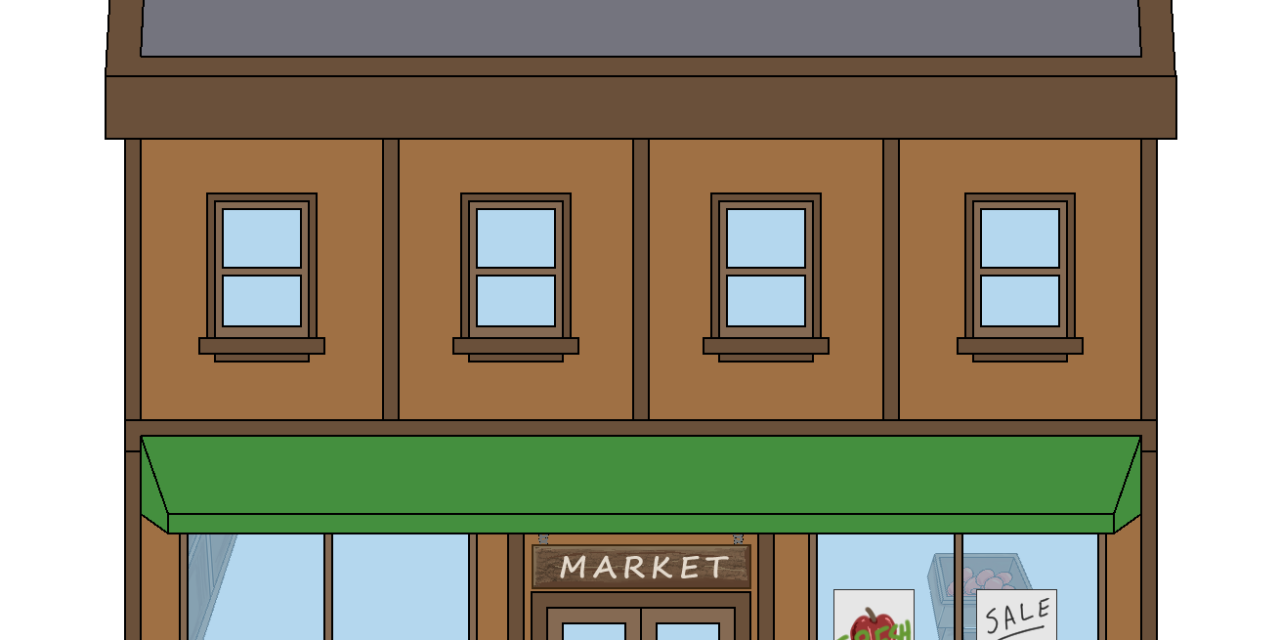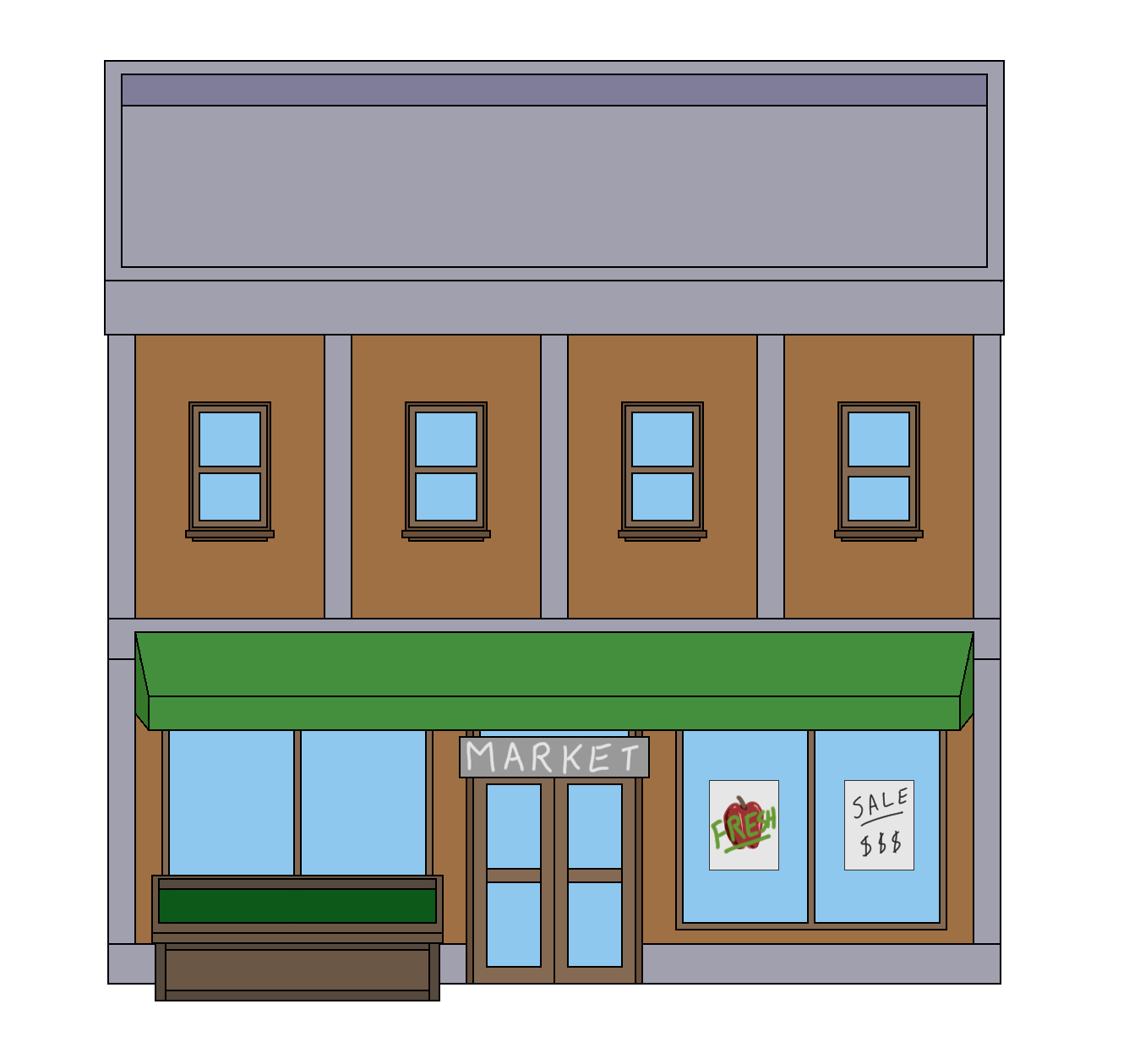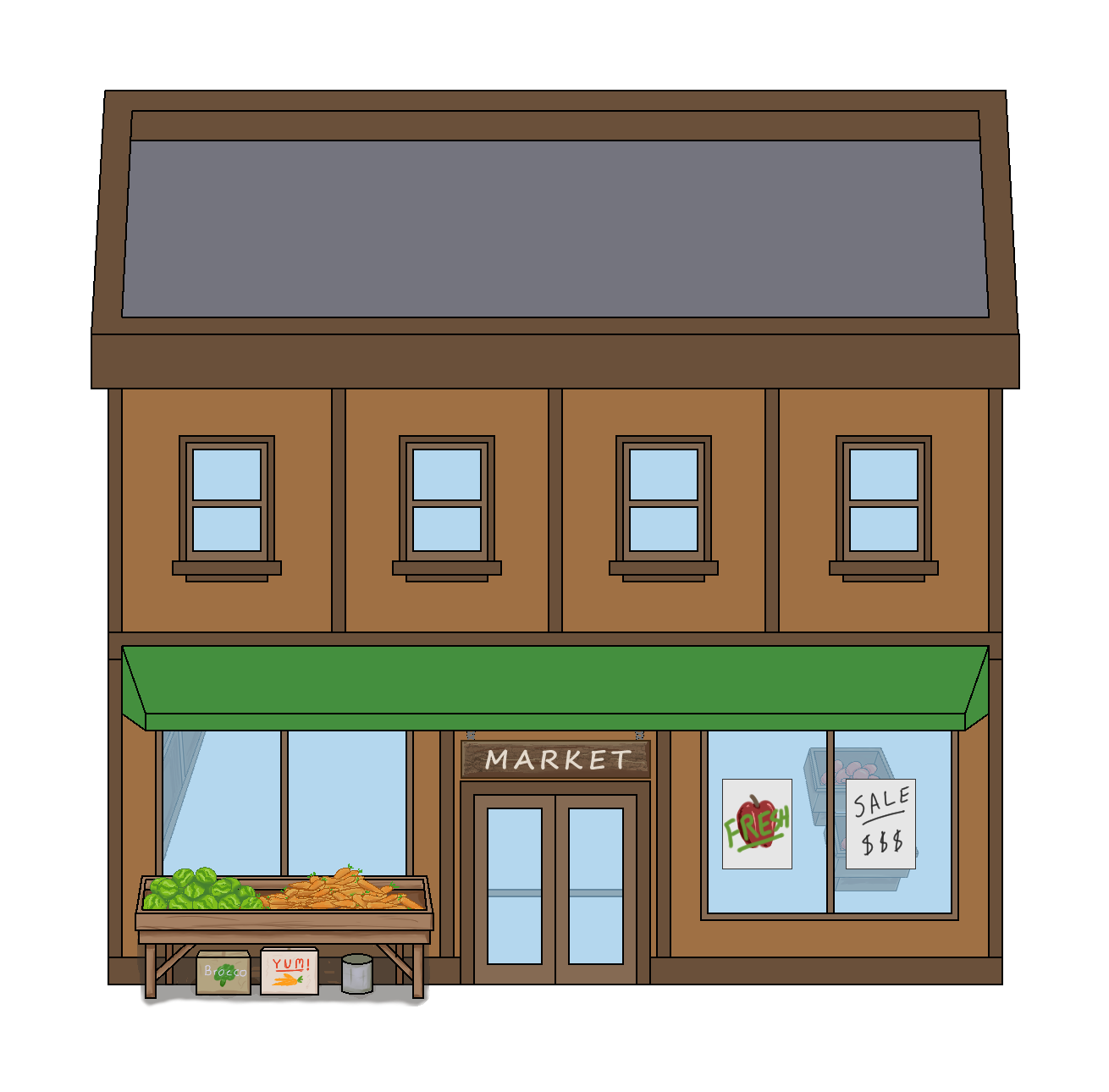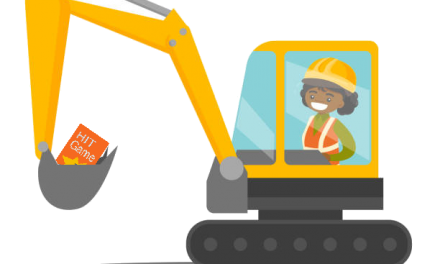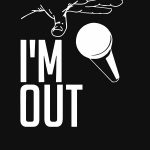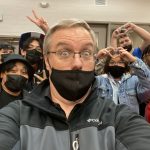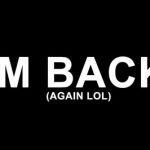We have to start somewhere, right??
I’ve said this before…I’m no artist. I’m a musician by trade, but my primary GameDev skill is coding. I can throw a complex AI together without hesitation or fear. You should see the database and event systems for this game!!
Art, though??? I’ve got a LOT to learn, and I’m ridiculously nervous to share this with anyone, but it needs to be done. In fact, it should have been done 3 Markets ago… The image above is my 4th attempt at the Market. Each one gets a little bit better in regards to scale, fit in the game world, and refinement.
If you’re chuckling, just wait. You’ll have to learn a new skill somewhere along the way during your GameDev journey. I’ll swing by and laugh at your rough draft someday. I’m posting this as a record of where the architectural art style STARTED for this game. Until now, I’ve been working on textures, tilesets, and trying prototype art in the game to see how things fit together and what style I’m going for. This is the first “recognizable” part of the game.
Yes, I have an artist.
He’s amazing, and he’s working on consignment / commission – if our game makes money, he’ll get paid – but there’s no guarantee of that. He’s a brilliant character animator who will be taking care of all the game’s character portraits, wardrobe, and character artwork. So I’m here hoping to measure up in some way to the art he’ll be producing.
So – let’s talk about my Market.
First, the obvious…no shading (aside from my getting carried away with the display out front), and no texturing AT ALL. This is a solid color prototype. I’ve been using it to fine-tune the ratio of objects to characters and tilesets in the game. My first one was WAY TOO BIG. Door handle was at the character’s 5’4 eye level…yep. Giant World. I’ve still got a lot to work out in terms of perspective. The awning isn’t right, but the building looks better with the slight perspective skew.
Here is version 3 vs my current 4th iteration. I dialed down the size to make things fit JUST RIGHT, and my wife came in and complained about how boxy it looked. I’ve been following the conventions set forth in the Liberated Pixel Cup over on OpenGameArt, but a lot of things don’t apply or look right in the painterly world I’m trying to create.
Ummm…those buildings DO NOT look painterly…
Not yet…90% of painterly is in brush strokes and shading work. I’ve gotten pretty good at that, and will prove it in t future blog when the Market hits version 5 or 6.
Why I posted this trash…
To develop as an artist, a game designer, and as a human being – we have to take risks and put ourselves out there. Somebody somewhere with nothing better to do will troll me for this shoddy attempt someday. Hopefully, I’ll have the last laugh when I show off my improved art in my successful Farm Game! I can already see an improvement with each iteration, and I’m still in the PLACEHOLDER stage. Just in this version, I’ve included a method to show window contents as part of the sprite and taken inspiration from a few paint manufacturers regarding exterior color schemes.
In short: The art I’ve made will change substantially before we even get to beta.
I’m to the point in our development cycle where I can’t really move forward until I create some of the game’s world. I’ve spent more time than I wanted adjusting the scale and art style, but this is all work that had to be done, anyway…and what else do you do during a months-long quarantine?? I joke with a few of my teachers friends, but I’ll leave this crisis (hopefully) healthy and with a few new skills under my belt. Each drawing I make looks a little better than the last, gets finished more quickly, and gets me one step closer to being able to do ANYTHING I WANT with my game design. Need that tree to be broken in a storm? I can do that…see the power?
Learning basic art skills is no different than learning to code. Even if you’re no expert, having SOME skill makes you a more agile game designer, and gets you a little closer to being able to realize your vision.

